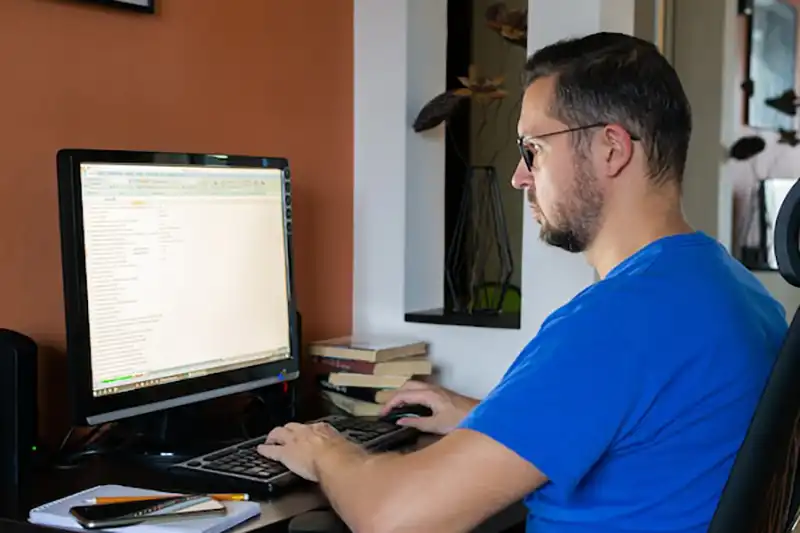Linux is an open-source operating system that powers everything from personal computers to servers. It is known for its stability, security, and flexibility. While the process of installing and configuring Linux might seem intimidating at first, it is actually a straightforward task with the right guidance. In this Beginner’s guide to installing and configuring Linux, we will walk you through the necessary steps to help you get started with Linux and set it up successfully on your system.
Choosing the Right Linux Distribution
The first decision when diving into the world of Linux is choosing the right distribution (distro). With a multitude of distros available, it’s essential to pick the one that suits your needs and skill level. A Beginner’s Guide to Installing and Configuring Linux would recommend distros like Ubuntu, Fedora, and Debian, which are known for being user-friendly and are great for beginners.
Ubuntu is one of the most popular choices for new Linux users due to its user-friendly interface, large support community, and ease of installation. It’s based on Debian and comes with a wide range of pre-installed applications, making it ideal for newcomers. Fedora, on the other hand, focuses on providing the latest software and cutting-edge features, which makes it appealing for those who want to stay up to date with the latest Linux advancements. Debian is known for its stability and reliability, but it may not be as polished or user-friendly as Ubuntu. For more experienced users, distros like Arch Linux or Gentoo provide more flexibility but require a deeper understanding of Linux.
When selecting your distro, consider factors like ease of use, support, and available software. For beginners, Ubuntu or Linux Mint are often the go-to choices. But ultimately, the best distribution for you will depend on your goals and preferences.
Preparing for Installation
Before you start the installation process, it’s important to properly prepare your computer. A Beginner’s Guide to Installing and Configuring Linux would emphasize backing up your data first and foremost. This ensures that you won’t lose any important files during the installation. Even though installing Linux usually doesn’t require wiping your entire hard drive, it’s always better to err on the side of caution.
Next, you’ll need to create a bootable USB drive with the Linux distro you plan to install. You can easily do this with tools like Rufus (for Windows) or Etcher (for macOS and Linux). Once your USB drive is ready, insert it into your computer and restart it.
In most cases, you’ll need to adjust the BIOS or UEFI settings on your computer to boot from the USB drive. To do this, restart your computer and press the BIOS/UEFI access key (usually F2, F12, or Delete) during startup. Once inside the BIOS/UEFI menu, change the boot order so that the computer boots from the USB drive first. Save the changes and exit.
Installing Linux on Your System
Now that your bootable USB is ready and your BIOS settings are configured, it’s time to install Linux. Restart your computer, and it should automatically boot from the USB drive. The installation process varies slightly depending on the distribution, but most Linux distros come with a graphical installer that will guide you through each step.
When you first boot into the Linux installer, you’ll be asked to select your language and keyboard layout. A Beginner’s Guide to Installing and Configuring Linux would recommend that afterward, you select a partitioning scheme for your hard drive. If you’re a beginner, it’s best to let the installer automatically partition your disk. This ensures that everything is set up correctly and minimizes the chances of making errors during the process.
If you want to keep your existing operating system (for example, if you want to try Linux alongside Windows), you can choose to set up a dual-boot system. This allows both operating systems to coexist on the same machine, and when you boot up, you’ll be given the option to choose which OS to load.
Once the partitioning is complete, the installer will copy the necessary files to your system. You’ll then be asked to set up a user account, including a password. After this step, the installation process will complete, and you’ll be able to reboot your system and boot into Linux for the first time.
Configuring Linux After Installation
After Linux is successfully installed, it’s time to configure your system. A Beginner’s Guide to Installing and Configuring Linux would suggest that the first thing you’ll see is your chosen desktop environment (DE). Most distros use popular DEs like GNOME, KDE Plasma, Cinnamon, or XFCE, which provide a graphical interface to interact with your system.
Before you begin exploring your new Linux system, it’s crucial to update your system to ensure that you have the latest software and security patches. You can do this easily by opening a terminal and typing the following command (for Ubuntu-based systems):
bash
CopyEdit
sudo apt update && sudo apt upgrade
This command will check for updates and install them automatically. It’s essential to keep your system updated to ensure it remains secure and up-to-date.
Additionally, you may need to install specific drivers for your hardware (like graphics, Wi-Fi, or audio drivers). In most cases, modern Linux distros will automatically detect and install the required drivers, but for certain hardware, you may need to manually install them. You can usually find additional drivers through your distro’s Software & Updates section or via the terminal.
Customizing Your Linux Environment
One of the key advantages of using Linux is its incredible flexibility. Unlike other operating systems, Linux allows you to fully customize your system, from the desktop environment to system settings.
In this Beginner’s guide to installing and configuring Linux, we recommend starting by exploring different desktop environments (DEs). Each DE provides a different look and feel, and you may prefer one over another. For example, GNOME is a simple, modern environment, while KDE Plasma offers a highly customizable and feature-rich experience.
Switching between different DEs is straightforward. For instance, you can install KDE Plasma on Ubuntu by running the following command:
bash
CopyEdit
sudo apt install kde-plasma-desktop
Once installed, you can log out and choose your new desktop environment from the login screen.
Beyond the desktop environment, Linux allows you to modify countless system settings, from appearance to power management. You can adjust things like your system’s theme, font settings, and window behavior. While this level of customization can be overwhelming at first, don’t worry – you can explore and make changes as you grow more comfortable with Linux.

Frequently Asked Questions
What is the best Linux distribution for beginners?
For beginners, Ubuntu, Linux Mint, and Fedora are popular choices. These distros provide an easy-to-use experience with a large support community and good documentation.
Can I install Linux without losing my current data?
Yes, you can install Linux alongside your current operating system using a dual-boot setup. However, always back up your data before proceeding to avoid accidental loss.
How do I install software on Linux?
Linux software is installed through a package manager, such as apt (for Debian-based distros like Ubuntu) or dnf (for Fedora). You can also use graphical software centers, which make it easy to browse and install applications.
Can I run Windows software on Linux?
Yes, you can use tools like Wine to run Windows applications on Linux. Alternatively, you can use a virtualization tool like VirtualBox to run Windows in a virtual machine.
How can I secure my Linux system?
To secure your Linux system, regularly install software updates, use strong passwords, and configure a firewall. You should also encrypt sensitive data and keep your system backed up.
Conclusion
By following this Beginner’s guide to installing and configuring Linux, you should now have a solid understanding of how to get started with Linux. While it may seem difficult at first, with practice, you’ll discover the many benefits that Linux has to offer. From customization to performance and security, Linux provides a powerful and flexible platform for personal use or professional environments.
For further resources, troubleshooting guides, and advanced topics, visit Wizland for expert support and assistance. Happy exploring, and welcome to the world of Linux!



